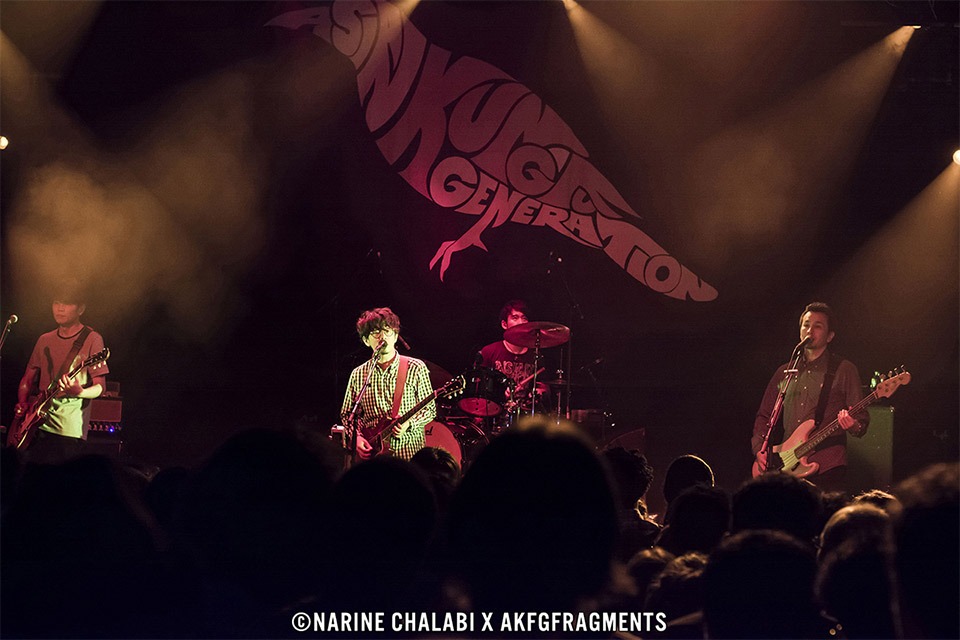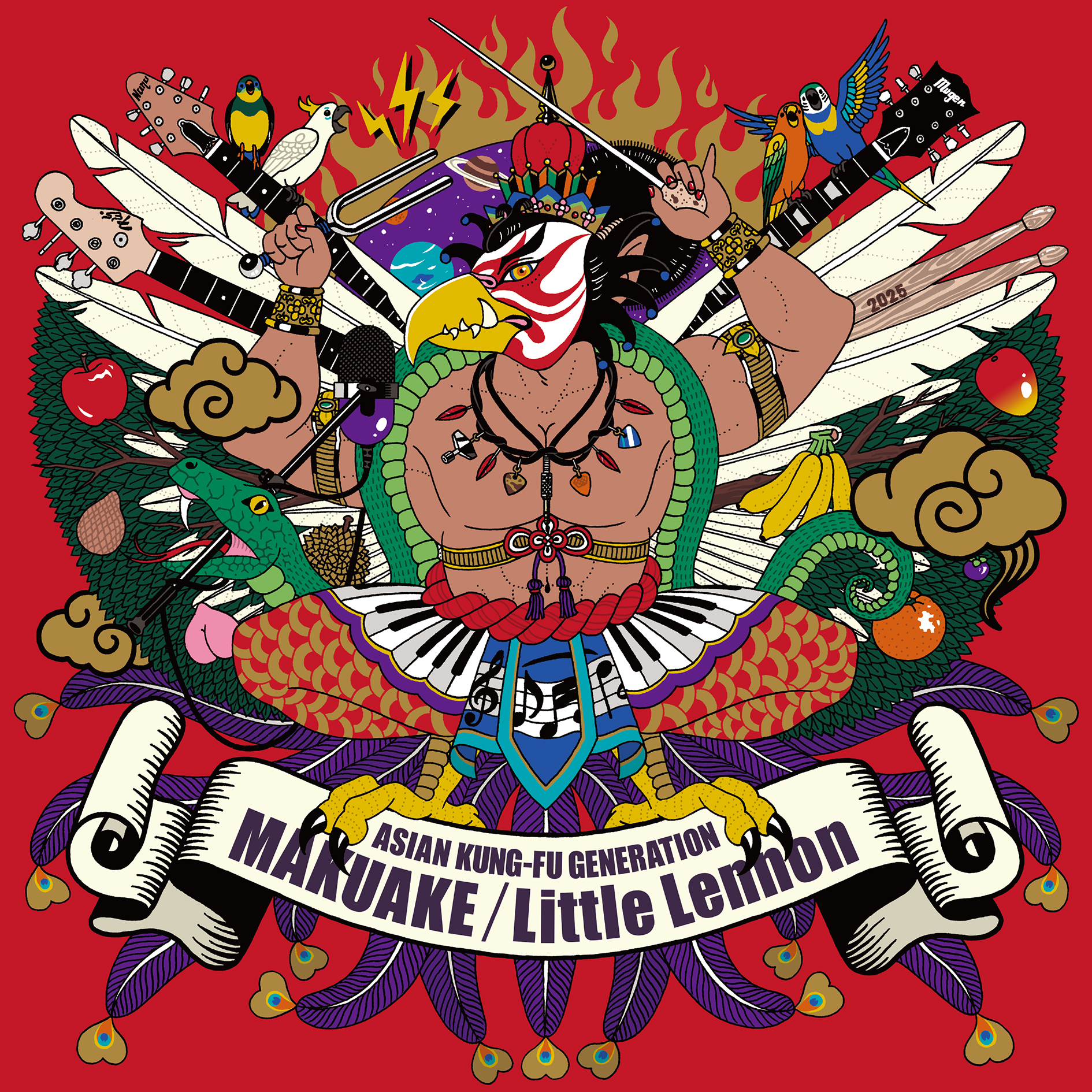akfgfragments – 2nd interview

Date of interview: 8th November 2015
Akfgfragments: Based on the album credits, you, Masafumi Gotoh, are the only album producer, which is totally new compared to the previous albums produced by the whole band. For what reason and is this the beginning of upcoming albums only produced by yourself?
Masafumi Gotoh: This time, the album has been recorded outside Japan, without any directors. So we had to take care of everything by ourselves. Facing this technical matter, we had to choose who was going to take up the reins and lead the recording. As a result, I suggested doing it first. Then, since we had a very tight schedule which we couldn’t take care of all together of the mixing verification, I went there alone, explained the situation to others, gathered their opinion and did a report for the mixing. That was my part.
The songs were recorded in 4 different places: Studio 606, Landmark Studio, Cold Brain Studio and Aoyama Compal Studio. What did the recording in the USA bring more to the album and why did you choose Studio 606 in particular?
Kensuke Kita: To use the Foo Fighters’ Studio 606 was the chance to see Sound City: Real to Reel. The Neve console (appearing in the documentary) is the one with which were recorded numerous artists albums that we all love so we really did wish to use it. Actually, we wanted to show off a little by going to that Foo Fighters studio (laugh).
Takahiro Yamada: When we made this album, the Foo Fighters band name came out as a keyword at the beginning.
Kensuke Kita: We wanted to play easy songs made of strong rock ‘n’ roll, by creating the four of us 8 different rhythms.
Takahiro Yamada: We went to Los Angeles in the USA with that kind of motivation.
Kensuke Kita: Ijichi’s drum skills changed a lot after we went to the USA. He first modified the sound of his drum.
Kiyoshi Ijichi: It’s different from Japan: since we first set the bass, those who listened to the music did feel that it was different from Japan.
Kensuke Kita: When he modified his drum sound, I thought, ‘The sound is very good !’. I was so excited and I told myself we did well to come.
To the reader who didn’t have the chance to listen to Wonder Future, what makes it different from Landmark according to you?
Kensuke Kita: The big Touhoku earthquake (11th March 2011) has greatly influenced Landmark. After the earthquake, we gathered in the studio, we wanted to make songs and record them; we were very united. ‘We absolutely want to record our next album in Japan,’ that was our concept. So, regarding Wonder Future, we wanted to record overseas. There is that big difference between those two albums.
Takahiro Yamada: One often thinks that Wonder Future is what happens next after Landmark.
Kensuke Kita: There are so many different sounds in Landmark and the album itself is more joyful than Wonder Future. As I said earlier, Wonder Future is a simple rock ‘n’ roll album.
Kiyoshi Ijichi: It’s something we did only with the 4 of us.
Takahiro Yamada: With Landmark we were also 7 people on tour.
Kensuke Kita: That’s true. Chorus and two musicians on keyboard and drums accompanied us.
First of all, worldwide fans thank you for having broadcast your penultimate venue of the nationwide tour. How did the organisation go? We believe it took a lot of time to set everything up.
Kensuke Kita: We are glad if we have made the fans happy. It seems the show has been broadcast in its entirety, encore included – that’s awesome! Even though it is about us, I thought, ‘Ajikan are generous’ (laugh). I said to myself, ‘That’s great, we can watch the live show at home while drinking beer’. That is true for Japanese people who couldn’t attend our shows during the venue but even more for overseas fans: until today, we never had such a stage and Shimoryo (Keyboard) won’t travel as guest for European and South America venues so we are happy the audience managed to see such a stage. Sometimes I tried to take care of the camera but I think these moments weren’t broadcast (laugh).
When are you going to do a USA tour and another one in Asia?
Kensuke Kita: We often talk about going on a tour to the USA and Asia. If the timing allows it and fans’ enthusiasm can be heard, we go for it as soon as possible. I particularly wish to play again in Los Angeles. We went again to New York to record but I’d like to go there again. I want to go to the USA and do an Asia tour again as soon as possible.
Tell us a little more about Uso to Wonderland. It’s wonderful to listen to Kita singing, we want to listen to him more often!!
Kensuke Kita: Yes. At the time of Uso to Wonderland, Ajikan was, how can I say ?… in a dead-end. So when I got materials, I expected Gotch to sing of course, but I was told, ‘Ken-chan, sing just to see’. I didn’t have that kind of thought so I was surprised at first but they supported me and I ended up singing (laugh). That’s how it happened. Then, I told myself that it would be great to play it overseas, but I don’t really know at the moment.
Ajikan staff: What do you think of the fans’ request, ‘We want to listen to Ken-san more often’?
Kensuke Kita: I’m very happy about it, thanks a lot.
When will it be your turn to sing, Yama-chan?
Kensuke Kita: I already listened to Yama-chan singing at the karaoke.
Takahiro Yamada: I always sing in my heart (laugh). Maybe when my singing will get better…
Kensuke Kita: Actually, in Yama-chan demo we can sometimes listen to his beautiful voice. We enjoy it between us. Unlike you could imagine, he has a cute voice. We are calling him the last young man. It gives you an idea of his pretty voice (laugh).
Many fans are trying to copy Kita’s ‘Distortion Sound’ without success, what is your secret Ken-san?
Kensuke Kita: I think I managed to create that sound with the amp I’ve been using for years and my Les Paul. I’m happy. People barely talk about my guitar sound when I manage to have that sound, so it is an honour that overseas fans think that way and I’m glad about it. During venues, I often play a monotonic distortion but when we are recording, I often touch the buttons. Then, I always feel that “density” (sound). I think we can get close to that sound when playing with low notes and distorting them.
Do we have a chance to see one day a new version of your indies songs for your 20th anniversary?
Kensuke Kita: It is not about our indies songs, however I can tell you that we already thought about making a new version of our first songs and that it would be nice to do it all together.
We have often listened to acoustic songs of yours. Will we have the chance to listen to an acoustic album one day?
Kensuke Kita: Many bands release acoustic albums. Many years ago I don’t know when exactly, actually during our Hall Tour in 2009, we played a part in acoustic. But thinking about it again and listening to it again, I think it’s not that bad. I’d like to do it one day, during a venue for instance. But at the moment, nothing has been set (laugh).
To conclude, could you please each of you leave a short message to your fans?
Kensuke Kita: I am extremely happy to know the existence of such a huge Ajikan fansite overseas and to know so many people supporting us. In the future, I wish to keep making albums and tours that all of you could support. Thank you.
Kiyoshi Ijichi: We are coming back to France very soon, please wait for us!
Kensuke Kita: Yes! I was so happy that many people waited for us once the show ended. Fans wanted signatures and shook our hands.
Takahiro Yamada: That’s true. They somehow gave us their love. 20 years ago, I couldn’t have imagined that our music would export overseas so please support us, we will keep making songs and albums not only for Japan but also for overseas fans.
Masafumi Gotoh: Thank you so much for your flawless support. I am extremely happy about that. I never thought a single second that one day that kind of fan site managed by overseas fans could see the light of day, I will always pay a lot of attention to it. I wish to see a lot of fans at our venue, thank you for your continuing support.

